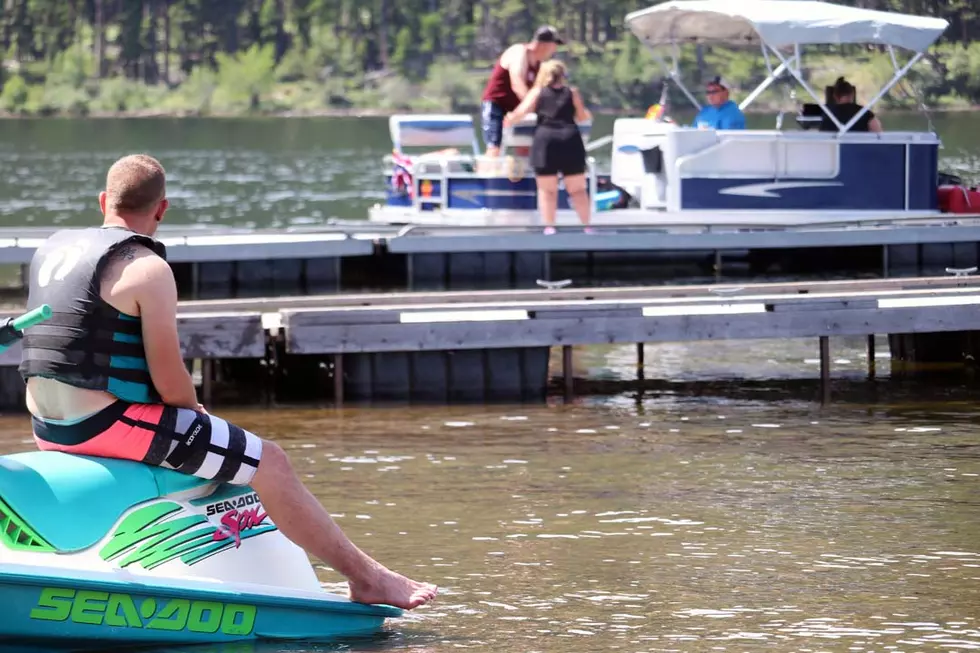
Trend shows summer could bring more boats with invasive mussels
With record numbers of contaminated boats passing through Montana, more education on the dangers of invasive mussels is needed.
During Wednesday’s meeting of the Upper Columbia Conservation Commission Thomas Woolf, Aquatic Invasive Species Bureau Chief for Montana Fish, Wildlife & Parks, reviewed the record-setting statistics of last summer’s invasive mussel prevention efforts, which aren’t likely to change in the upcoming season.
Last summer, boat check stations across the state found invasive mussels on 61 boats during the 2021 season. That’s almost twice as many as were found in 2020 and four times the amount found in 2017 through 2019.
“We just keep finding more of these things. Partially us getting better at what we do out there, but also we have a lot of people buying boats in the Midwest and shipping them to the West,” Woolf said.
One-third of those boats were identified at the Anaconda check station on Interstate 90. That’s a little concerning, Woolf said, because those boats had to pass other check stations to get as far into the state as they did.
Another 16 contaminated boats were stopped at the Glendive check station near Montana’s eastern border. That’s because the majority of the boats passing through Montana – about three-quarters - are from eastern states, with most coming from the Great Lakes area, where mussels are a problem. Other problem areas are Lake Havasu and Lake Powell in Utah and Arizona.
Based on data from mussel-fouled boats over the past four years, the vast majority of those boats had never been inspected before. At least half the boats were new purchases. Woolf said boats in the Great Lakes area are less expensive, so people will often buy them online and then pick them up or have them shipped west. That’s why the AIS program is trying to find more ways to educate truckers about the problems of carrying dirty boats.
While only a third of the contaminated boats were headed for Montana lakes and streams, the thought that they might have not been caught is concerning.
Montana needs to remain free of invasive quagga and zebra mussels because they’re tiny – the size of a dime - and almost impossible to eradicate once they get established. They pose a huge economic threat because they spread rapidly to cover anything from boat docks and irrigation ditches to dam turbines.
The state had a scare in 2016 when mussel larvae called veligers were found in water samples from Tiber and Canyon Ferry reservoirs. Fortunately, it appears no mussels took hold. Since then, the Legislature has invested about $5 million a year to fund water sampling and boat check stations to try to keep the mussels out.
After 2016, the AIS sampling laboratory got a lot more attention and a little more money, because part of the original problem was the lab didn’t get around to processing the important Tiber Reservoir samples for a number of months. Since then, the processing of water samples has accelerated. In 2021, the lab analyzed a record 3,700 water samples, compared to 1,600 in 2016.
That sampling has been critical for Tiber Reservoir, which was listed as positive for invasive mussels. But now, since it’s produced five years of samples with no veligers, Tiber Reservoir will likely regain a clean bill of health. Woolf said all the money that’s been spent on extra safeguards for Tiber could now go toward FWP funding for four check stations that have been financed by other groups.
There is special concern about mussels getting into waters west of the Continental Divide, because the Columbia River basin is the only region in the U.S. that’s still mussel-free. If mussels got into Flathead Lake, it would only be a matter of time before they floated all the way down the Columbia River to damage several dams.
The Confederated Salish and Kootenai Tribes’ check station at Ravalli is the last line of defense before people get to Flathead Lake and they stopped four contaminated boats last summer. They also reported that about 1,000 boaters drove by without stopping. If boaters don’t stop, they can be cited. But, FWP can only afford to dedicate a handful of wardens to check stations.
Inspectors know that some people tow boats at night, but not many. Woolf said it probably isn’t enough to offset the cost to run check stations with wardens for 24 hours. The AIS program ran a nighttime check station in Hardin over a July weekend and no contaminated boats were found. However, with more boats coming through, they’ll run a few more pilot projects this summer.
Continuing education and outreach is needed so people know how important it is to have their boats checked and to clean, drain and dry their boats when they get home so they aren’t moving any invasive species. With so many moving to Montana from out-of-state, it’s hard to get the word out to all those unaware of the dangers.
However, the AIS program has lost its information officer Liz Lodman, so it’s rearranging its outreach program. They may not be able to find someone to do the face-to-face outreach Lodman used to do. In the meantime, FWP is investing more into digital outreach, such as webpage banners and will lean on fly shops to spread the word.
Contact reporter Laura Lundquist at lundquist@missoulacurrent.com.
